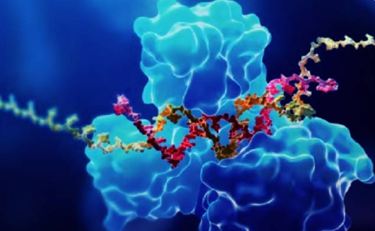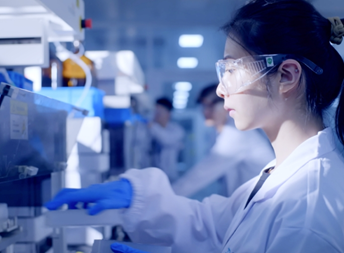Drug Metabolism and Pharmacokinetics (DMPK) bioanalysis is critical in drug development. It assesses the behavior of a drug in the body, focusing on absorption, distribution, metabolism, and excretion (ADME). Accurate bioanalysis techniques ensure reliable data to support drug safety and efficacy. This blog delves into the primary and advanced techniques used in dmpk bioanalysis, their roles, and their integration into drug development processes.

High-Performance Liquid Chromatography (HPLC) is a popular technique in DMPK bioanalysis due to its precision and reliability. It allows the separation of analytes based on their interactions with a stationary phase and a mobile phase. The technique is highly versatile, accommodating various sample types, including plasma, urine, and tissue homogenates. Scientists leverage HPLC to quantify drug concentrations and metabolites, providing critical insights into the pharmacokinetics of compounds. This technique’s high resolution and sensitivity make it indispensable in early-stage drug discovery and development.
Liquid Chromatography-Mass Spectrometry (LC-MS) combines the separation capabilities of HPLC with the detection power of mass spectrometry (MS). LC-MS is essential for identifying and quantifying low-abundance analytes in complex biological matrices. The technique’s specificity and sensitivity stem from its ability to separate compounds chromatographically and subsequently analyze their mass-to-charge ratios. Researchers commonly use LC-MS in metabolite identification, pharmacokinetic studies, and biomarker discovery. Its high-throughput capability and accuracy make LC-MS a cornerstone in modern DMPK bioanalysis.
Gas Chromatography-Mass Spectrometry (GC-MS) is another vital technique in DMPK bioanalysis, particularly for volatile and thermally stable compounds. In GC-MS, a sample is vaporized and separated in a gas chromatograph before being analyzed by a mass spectrometer. The method is highly effective in detecting small organic molecules and volatile metabolites. GC-MS’s specificity, combined with its robust identification capabilities, enables detailed metabolic profiling and the study of drug decomposition pathways. This technique is often used when analyzing environmental samples or in forensic toxicology.
Enzyme-Linked Immunosorbent Assay (ELISA) is a widely used bioanalytical technique for detecting and quantifying proteins, antibodies, and hormones. In DMPK studies, ELISA is instrumental in measuring drug-binding interactions and concentrations of therapeutic proteins. The technique relies on antigen-antibody interactions, where enzymatic reactions produce a detectable signal, typically a color change. Researchers favor ELISA for its specificity, sensitivity, and ability to handle high-throughput screening. It plays a vital role in immunogenicity testing and monitoring biologics during drug development.
Capillary Electrophoresis (CE) is a powerful technique for separating charged molecules based on their size-to-charge ratio in an electric field. CE is particularly useful in DMPK bioanalysis for its speed, resolution, and low sample consumption. Researchers employ CE to analyze small ions, peptides, nucleotides, and other biomolecules. The technique’s flexibility allows it to be coupled with various detection methods, including UV and MS. CE is ideal for characterizing complex biological samples, studying protein binding, and analyzing drug metabolites.
Mass spectrometry (MS) relies on ionization techniques to convert analytes into ions for detection. Common ionization methods in DMPK bioanalysis include Electrospray Ionization (ESI) and Matrix-Assisted Laser Desorption/Ionization (MALDI). ESI is suitable for large, non-volatile molecules, facilitating the analysis of proteins and nucleotides. MALDI, on the other hand, is ideal for analyzing biomolecules from tissues and complex matrices. Understanding these ionization techniques is crucial for selecting the appropriate MS methodology, and enhancing the accuracy and sensitivity of DMPK studies.
Mass spectrometry excels in identifying and quantifying drug metabolites, essential for understanding a drug’s metabolism and pharmacokinetics. Researchers use techniques like triple quadrupole MS for targeted quantification and high-resolution MS for untargeted metabolite discovery. By analyzing the mass spectra, scientists can determine the structures and concentrations of metabolites in biological samples. MS’s high sensitivity and specificity ensure accurate measurement of metabolites at low concentrations, crucial for safety assessments and regulatory submissions.
Regulatory bodies, such as the FDA and EMA, set stringent guidelines for bioanalytical method validation and reporting in DMPK studies. Adhering to these regulations ensures that the data generated is reliable, reproducible, and suitable for regulatory submissions. Best practices include thorough method validation, rigorous quality control, and maintaining detailed documentation. Compliance with these standards is essential for the successful advancement of drug candidates through clinical trials and approval processes.
Interpreting bioanalytical data accurately is crucial for informed decision-making in drug development. Scientists analyze pharmacokinetic parameters, such as clearance, volume of distribution, and half-life, to predict drug behavior in humans. The integration of bioanalytical data with pharmacodynamic and toxicological information helps in optimizing drug dosing regimens and minimizing adverse effects. Effective data interpretation supports evidence-based decisions, guiding the progression of promising compounds and the discontinuation of unsuitable candidates.

DMPK bioanalysis employs a range of sophisticated techniques to study drug metabolism and pharmacokinetics. From classic chromatography methods like HPLC and GC-MS to advanced assays like ELISA and CE, these techniques provide vital insights into drug behavior. Mass spectrometry plays a pivotal role in both the identification and quantification of analytes. Integrating these methods into the drug development process ensures comprehensive evaluation, supporting the development of safe and effective therapeutics.